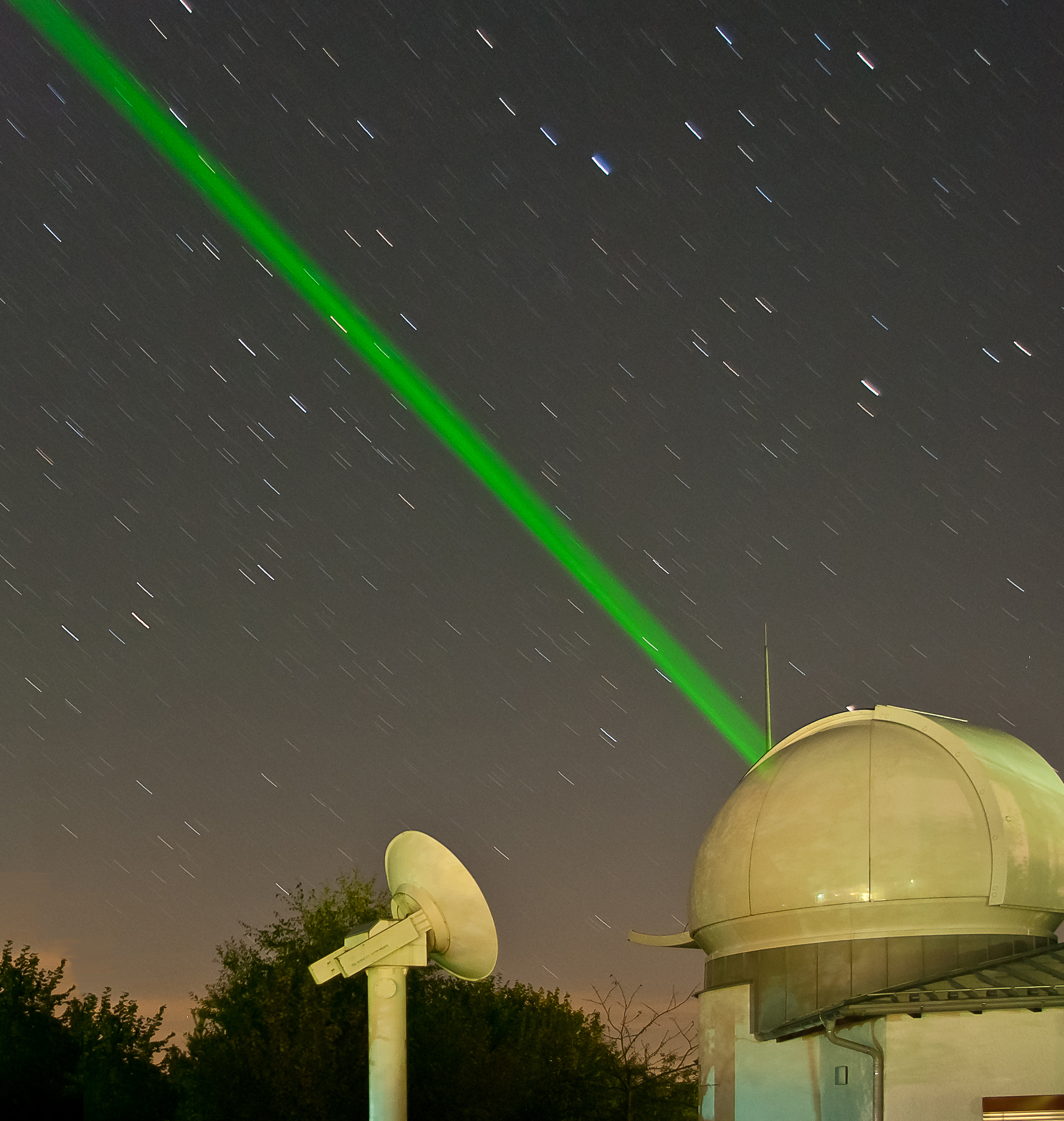Analysis of Satellite Laser Ranging Observations

DGFI-TUM has broad expertise in the analysis of satellite laser ranging (SLR) observations to spherical and non-spherical near-Earth satellites. In its role as an official Analysis Center (AC) of the International Laser Ranging Service (ILRS), DGFI-TUM is in charge with the analysis, quality assessment, bias determination and quick look data validation of laser ranging measurements performed by globally distributed stations.
The applications of laser ranging observations are manifold. DGFI-TUM analyses SLR data in order to determine
- coordinates and velocities of SLR tracking stations,
- Earth Orientation Parameters (EOP) in combination with other space geodetic techniques,
- low-degree coefficients of the Earth's gravity field,
- atmospheric parameters, such as the thermospheric density,
- relativistic quantities, and the
- Gravitational constant GM.
In the realization of the International Terrestrial Reference System (ITRS) at DGFI-TUM, SLR plays a specifically important role. Since precise SLR measurements to spherical satellites allow to determine the Earth's center of mass with very high accuracy, they are optimally suited to realize the ITRS origin that is defined to coincide with the Earth's center of mass. A further major task at the institute is the Precise Orbit Determination (POD) of near-Earth satellites based on SLR observations which provide very precise tracking data in the radial direction seen from the Earth’s surface.
The SLR data analysis is performed using the Orbit Computation library of the 'DGFI Orbit and Geodetic parameter estimation Software' (DOGS-OC). It enables the integration of satellite orbits, the estimation of geodetic parameters and the simulation of SLR ground networks and satellite constellations. Besides its operational use, DOGS-OC is continuously further developed in order to improve the accuracy of geodetic parameter estimates, incorporate new target quantities and extend its functionality, e.g. to the orbit computation of other geodetic observation techniques. In addition to the SLR data analysis, DGFI-TUM operates the EUROLAS Data Center (EDC) which is one of two global archives for laser ranging observations.
Arcisstraße 21
80333 München